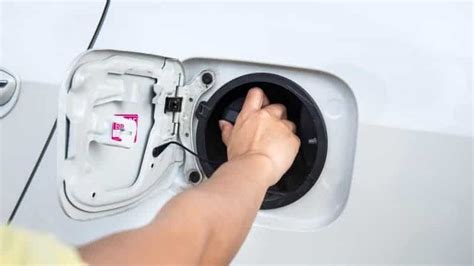Fuel Tank Cleaning: Do It Yourself & Save
Keeping your vehicle's fuel system clean is crucial for optimal engine performance, fuel efficiency, and longevity. A clogged fuel tank can lead to poor fuel mileage, engine sputtering, and even costly repairs down the line. While professional fuel tank cleaning services exist, you can often achieve impressive results with a DIY approach, saving yourself a significant amount of money. This guide will walk you through the process, helping you determine if DIY fuel tank cleaning is right for you and providing step-by-step instructions.
Is DIY Fuel Tank Cleaning Right for You?
Before diving in, it's important to assess your mechanical aptitude and the severity of the fuel system contamination. DIY fuel tank cleaning is best suited for individuals comfortable working with automotive systems and dealing with gasoline (always prioritize safety!). If you're unsure about any aspect of the process, it's best to consult a professional mechanic. This method is primarily effective for addressing minor fuel contamination, such as sediment buildup or minor water intrusion. Severe contamination, rust, or damage to the fuel tank itself will likely require professional intervention.
What are the signs that I need a fuel tank cleaning?
This is a common question many car owners have. Several indicators suggest your fuel tank may need attention:
- Reduced fuel efficiency: Noticeably lower gas mileage than usual is a key sign.
- Engine hesitation or sputtering: The engine struggles to run smoothly or hesitates during acceleration.
- Rough idling: The engine idles unevenly or shakes excessively.
- Check engine light: A illuminated check engine light, particularly with codes related to fuel system issues, warrants investigation.
- Fuel pump noise: Unusual noises emanating from the fuel pump area could indicate obstructions.
How to Clean Your Fuel Tank: A Step-by-Step Guide
Disclaimer: Always work in a well-ventilated area and take necessary precautions when handling gasoline. Wear appropriate safety gear, including gloves and eye protection. Gasoline is highly flammable; keep away from open flames and sparks.
Tools and Materials:
- Fuel tank drain valve (if equipped): Makes draining much easier.
- Siphon pump: For transferring fuel from the tank.
- Clean fuel containers: To store the drained fuel.
- Fuel tank cleaner: Choose a reputable brand designed for fuel tank cleaning.
- Shop rags or absorbent cloths: For cleaning.
- Protective gloves and eyewear: Essential safety equipment.
- Funnel: For adding the cleaner and refilling the tank.
Steps:
-
Safety First: Disconnect the negative battery terminal before starting any work on your vehicle's fuel system. This reduces the risk of sparks igniting fuel vapors.
-
Drain the Fuel Tank: Carefully drain the fuel tank using the drain valve (if available) or a siphon pump. Transfer the fuel into clean, appropriately labeled containers. You can reuse this fuel after filtering (see below).
-
Add the Fuel Tank Cleaner: Follow the manufacturer's instructions on the fuel tank cleaner. Usually, this involves adding the cleaner to the tank and then filling it with fresh fuel.
-
Run the Engine: Run your vehicle's engine for at least 30 minutes to allow the cleaner to circulate through the fuel system.
-
Drain and Refill: After running the engine, carefully drain the tank again. This removes the loosened sediment and contaminants.
-
Fuel Filter Replacement (Recommended): Replace your fuel filter. This removes any remaining debris from the cleaning process and ensures optimal fuel flow.
-
Refill the Fuel Tank: Fill your fuel tank with fresh, clean fuel.
-
Reconnect the Battery Terminal: Once the fuel tank is refilled, reconnect the negative battery terminal.
How to Filter Used Fuel
Used fuel can often be cleaned and reused, reducing waste and saving money. You can do this using a fuel filter, which can be purchased at most auto parts stores. Follow the filter manufacturer's instructions carefully, ensuring that the filtration process is done in a safe, well-ventilated area.
What about professional fuel tank cleaning?
Professional fuel tank cleaning often involves more intensive methods, such as ultrasonic cleaning or specialized chemical treatments. These are best suited for severely contaminated tanks or those with significant damage. A professional can also assess the condition of your fuel tank and advise on the best course of action.
Conclusion
DIY fuel tank cleaning can be a cost-effective way to maintain your vehicle's fuel system and improve its performance. Remember to prioritize safety and choose the right method based on the condition of your tank. If you are uncomfortable performing this task yourself, it is always best to seek professional assistance. By following this guide and practicing safety precautions, you can keep your car running smoothly and save money in the long run.

